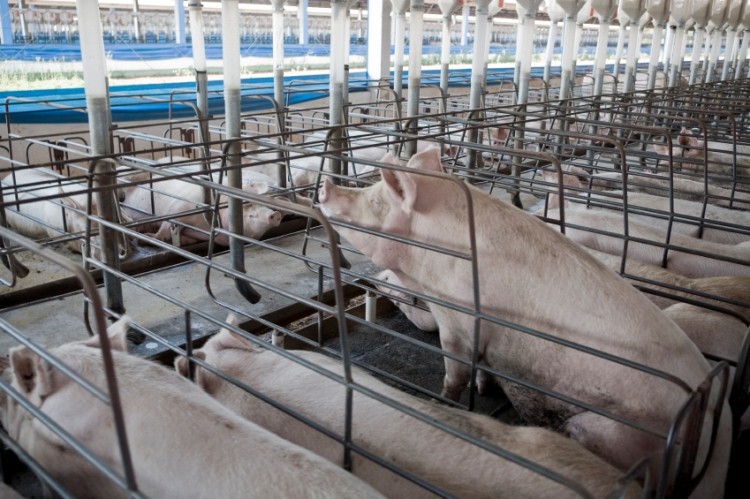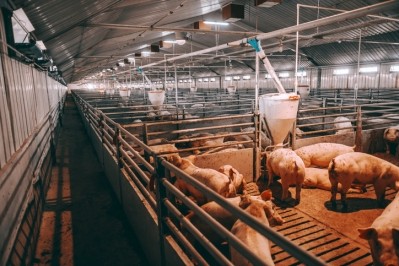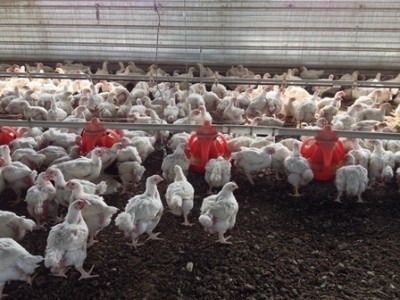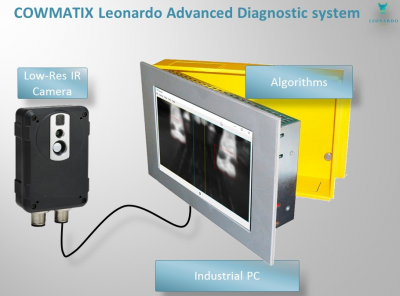Animal scientists look to enhance a pig-specific precision feeding system

“One of the big challenges is to move from research to commercial,” said Candido Pomar, research scientist at the Dairy and Swine Research and Development Centre based in Agriculture and Agri-Food Canada (AAFC).
He led a team of international researchers in a study looking at the impact of moving from conventional to precision feeding systems in growing–finishing pig operations on animal performance, nutrient utilization, and body and carcass composition.
That study, published in the Journal of Animal Science in 2014, found a pig-specific precision feeding method could limit the elimination of nutrients while maintaining growth, development and carcass quality.
The multiphase-individual feeding (MPI) system, said the team involved, represents a paradigm shift in pig feeding as it takes into account between-animal variation in nutrient requirements within a population and their dynamic evolution over time.
Pomar told us this kind of feeding system could be implemented in both small and larger pig operations. However, he reckoned it may offer greater benefits to farmers with larger numbers of animals in production.
The process can save swine producers about 10-15% in feed costs, added Pomar. Using the same two or more premixes across a farm should limit costs from feed storage, handling and transportation, said the scientist.
And the feeding system saw a significant reduction in the levels of nitrogen and phosphorus excretion, said Pomar.
He said the type of automatic monitoring involved in such a precision feeding approach can also allow for earlier detection of disease or facilitate the feeding of treatments, both of which contribute to improved pig herd health and performance.
Trial details
In the study, 60 pigs were given one of four treatments for 84 days, said Pomar and his team of researchers.
The treatments included a three-phase (3P) feeding program comprised of a mixture of high (A) and low nutrient (B) density feeds; a three-phase commercial (COM) feed; a daily feeding program where the high and low nutrient density feeds were mixed to meet estimated dietary requirements of the herd in a multiphase group feeding (MPG); or a daily feeding program in which the high and low nutrient density feeds were formatted for individual pigs (MPI).
The 3P and COM diets were fed in the same mixes throughout the trials, they added.
“Experimental A and B feeds differed in Lysine and other nutrient concentration, with feed A being formulated with a high nutrient density (to satisfy the estimated requirements of the most demanding pig at the beginning of the growing period) and feed B formulated with a low nutrient density (to satisfy the estimated requirements of the least demanding pig at the end of the finishing period),” said the scientists.
Feed intake was recorded daily and pig weights were taken weekly throughout the trial. Body composition and back fat thickness and loin muscle depth were recorded initially and again every 28 days.
Additionally, nitrogen and phosphorus elimination was calculated using the difference from retention and intake, they said. Measurements for organs, carcass and primal cuts were taken at the end of the trial.
Results
Using a tailored feeding program for finishing pigs cuts down on nutrient elimination without negatively influencing pig growth and development, said the researchers.
The commercial feeding program limited average daily feed intake (ADFI) but boosted the gain to feed ratio (G:F) when compared to the other feeding systems, they said.
The MPG and MPI feeding methods were comparable to those of the 3P program for the ADFI, average daily gain (ADG), G:F, final body weight, nitrogen and phosphorus retention, they said.
“However, compared with the 3P treatment, the MPI feeding program reduced the standardized ileal digestible lysine intake by 27%, the estimated nitrogen excretion by 22%, and the estimated phosphorus excretion by 27% (P < 0.05),” said researchers. “Organs, carcass, and primal cut weights did not differ among treatments.”
Source: Journal of Animal Science
Title: The impact of feeding growing–finishing pigs with daily tailored diets using precision feeding techniques on animal performance, nutrient utilization, and body and carcass composition
DOI: 10.2527/jas.2014-7643
Authors: I. Andretta, C. Pomar, J. Rivest, J. Pomar, P. A. Lovatto and J. Radünz Neto














